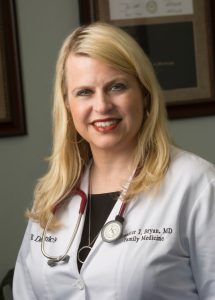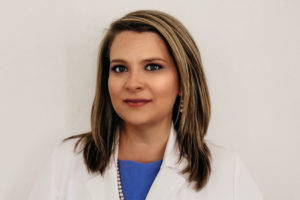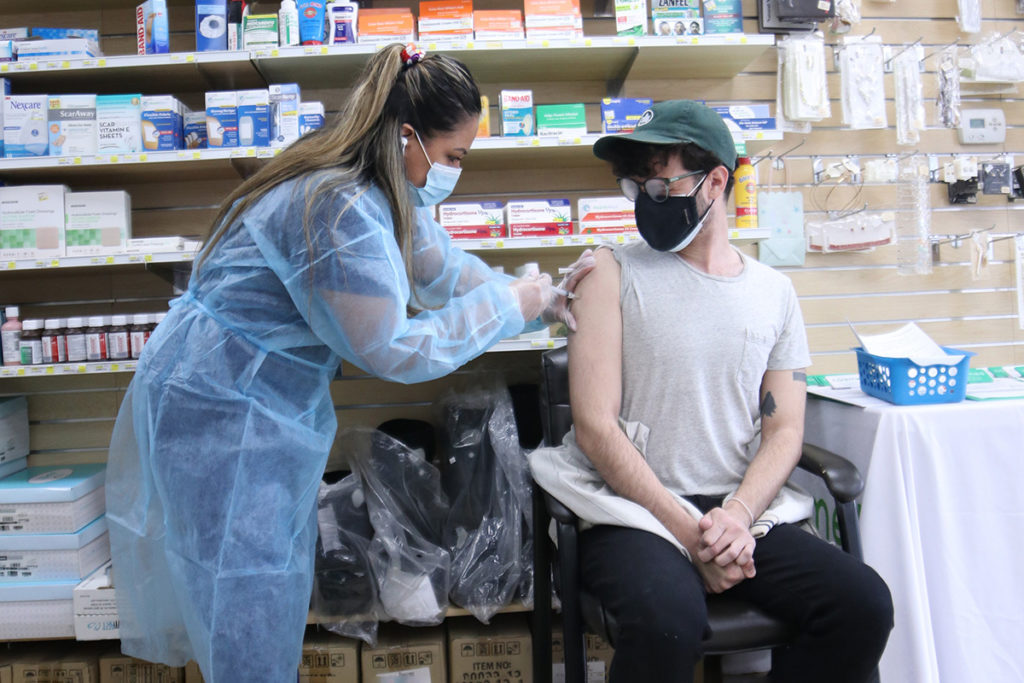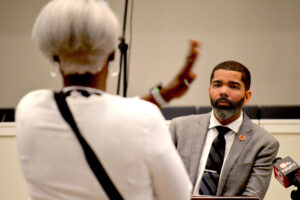Dr. Jennifer Bryan is a careful observer of Mississippi’s fragile medical system. These days, she sees it existing in a state of limbo, neither in the depths of previous crises nor firmly on the road to recovery.
“This is not 2019 medicine. This is 2022 medicine,” she told the Mississippi Free Press in a Friday interview. “Many of the things that we enjoyed as a luxury prior to the pandemic are just not possible right now.”
The medical supply chain in Mississippi is still in a dire state of disrepair, and experts are warning that no clear exit strategy exists. Heavy-duty equipment, lab results and staff replenishment continue to waver even after months of low transmission of COVID-19.

Bryan, a physician and member of the Mississippi State Medical Association’s Board of Trustees, said that the damaged supply chain manifests in numerous challenges for the state’s health care providers.
“The supply-chain issues and staffing shortages we’re facing are certainly not unique (to us), but they’re likely more noticeable within health care because of how they affect the individual. Awareness of these issues is critical,” Bryan said.
The Food and Drug Administration tracks many of the material shortages facing health-care providers month to month. Right now, Bryan says, the biggest shortage is of iohexol, a contrast dye used to highlight internal imagery on CT and x-ray exams.
That shortage in particular is the direct consequence of a COVID outbreak in Shanghai, China, which triggered a hard lockdown of the city and the closure of a GE Healthcare plant that produces the compound.
“We do CT scans with contrast dye every single day. It’s involved in the workup of multiple conditions and multiple organs. This is probably the first time that there’s been that wide of an impact (on supply),” Bryan explained.
So providers are forced to consider workarounds—non-contrast CT scans or ultrasounds, which may miss valuable details. They can also consider MRIs, which use different forms of contrast media but are also significantly more expensive. “The shortage is really about saying, ‘Think about what you’re ordering. Is it necessary? Why are you ordering it?’” Bryan added.
For Christina Nunnally, DNP, the chief quality officer at North Mississippi Primary Health Care, the supply-chain crisis continues to manifest in unexpected ways. A long wait for critical heavy equipment has delayed the opening of a new dental clinic for nearly half a year.
Bryan warned that some of the proactive efforts that previously helped patients stay on top of their health care prior to the pandemic are likely to be lacking across the state. “We’re in this in-between phase of not having enough supplies or workers,” she said. “It’s really important for patients in the public to be aware that those impacts are there. Pay attention, take notes … follow up on (doctor’s visits.) Don’t just assume that because someone didn’t call you back everything must’ve been normal. It’s really a time to take your health into your own hands.”
‘The Biggest Shortage is Staff’
A lack of material goods continues to complicate medical services for most providers in Mississippi. But an even more significant challenge is in human resources.
“The biggest shortage we have is staff,” Bryan explained. “People underestimate that—you go to a restaurant and the wait is longer because there’s less help. We’ve gotten used to seeing empty tables.” The staffing issues the medical system faces are often less visible, but even more impactful.
Years of damage to the medical system have compounded into an ongoing staffing crisis. Burnout, deaths, transfers and the demands of the public have sapped the medical workforce. Mississippi’s political leadership has been hesitant to address the growing need.
Bryan said that the high adrenaline of the pandemic has given way to exhaustion. “Nearly 20 to 25% of the health care workforce across the country has retired, or gotten sick—some have died, some have quit,” she said.
“The demands of the public were (severe) at the height of COVID. The politicization and the blowback on doctors has turned more into a burnout phase where our physicians and health care workers are weary and worn out,” Bryan said.
Nunnally’s clinic dug deep to keep staff on board, going to serious lengths to invest in their staff even as an ambulatory provider. “We did not lay off people,” she said. “We dug into reserves—added employee benefits, did retention bonuses. We said, ‘well, we’re going to need these folks.’”
Most unnerving about the continued needs of the broader medical system, both agreed, was that the challenges are arriving after months of relative calm. Early 2022, after the sharp decline of omicron, has seen some of the lowest transmission since the start of the pandemic. No acute need compounds the problems—this is simply the state of the health-care system after so much damage.
Preventative Care Damaged
Previously, University of Mississippi Medical Center leadership predicted it would take years for the repair of the medical workforce at their hospital, but this prediction also depended on a process of restoration. Omicron is not finished with the U.S., and the pandemic is not over. Even now, the Mississippi State Department of Health warns that a serious uptick is already in motion.

Nunnally sees it in her clinical setting as well. Looking at the most recent data she had available, a surge in new cases and positivity rates was visible. “(Right now) we have almost a 15% positivity rate. That’s not negligible,” she said.
COVID-19 has damaged more than the supply closets and workforces of hospitals and clinics like Nunnally’s. It has also severely harmed their outreach and prevention efforts, proactive attempts at improving community health that have been key to their mission for most of the pre-pandemic period.
“Before COVID started we had plans,” she said. “We were going to start focusing on different disease states, looking to make progress for the future, to make our health care that much better for all our patients. When COVID hit, all that had to go out the window … we just didn’t have the resources to devote there.”
Returning to that goal was a hopeful resolution for 2022, after the omicron surge. Now, Nunnally is worried it will be a year like the ones that came before it. “If COVID surges,” she said, “and we have to backtrack again, that’s just going to delay it even more. We can’t fight on two fronts. And I see that happening not only in our organization, but in the health-care system as a whole.”










